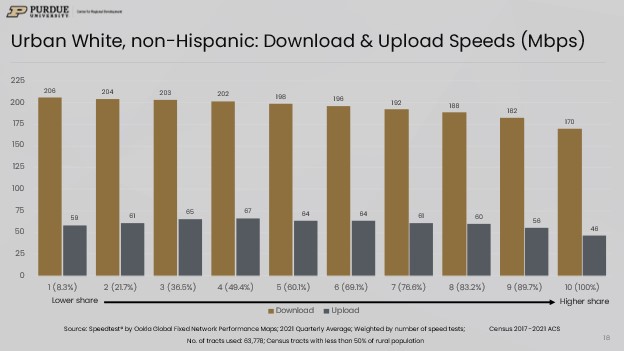
Editor’s Note: Over the past 15 years, Roberto Gallardo has authored or co-authored more than 70 articles for the Daily Yonder. His primary concentration has been on rural broadband. In this submission, Gallardo looks at a finding from his last Daily Yonder article: that rural whites tend to have slower broadband access than people of color. It’s a counterintuitive fact, given that people of color generally tend to have less access – not more – to basic services.
Our previous analysis looked at average download and upload speeds for all Census tracts in the nation with population and more than 50 speed tests and specific demographic characteristics. The Census Bureau American Community Survey 2017-2021and internet speed test results from the Speedtest by Ookla Global Fixed Network Performance Maps were used.
We found that rural, older (age 65 or older), and white non-Hispanic tracts had slower download and upload speeds. The first two results were expected. However, we were not expecting to find that Census tracts with a higher share of white non-Hispanics had slower download and upload speeds. We offered two potential explanations in our previous article. First, it could be that since a higher share of white non-Hispanics live in rural areas, and rural has slower speeds, this may be reflected in the finding. Second, a higher share of white non-Hispanics is older (age 65 or older), and this group also had slower speeds, so this too could be reflected in the finding. Therefore, we take a deeper look at these two possible explanations.











